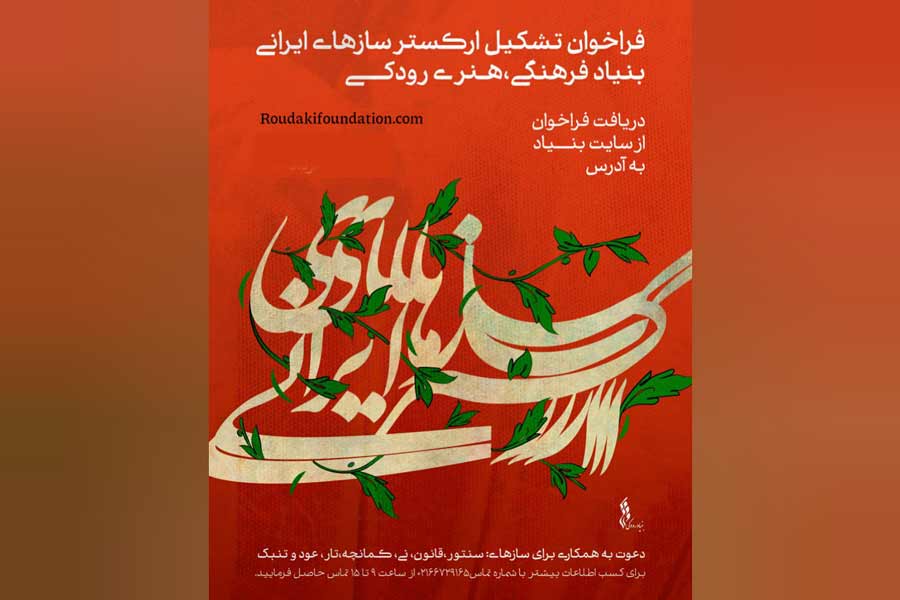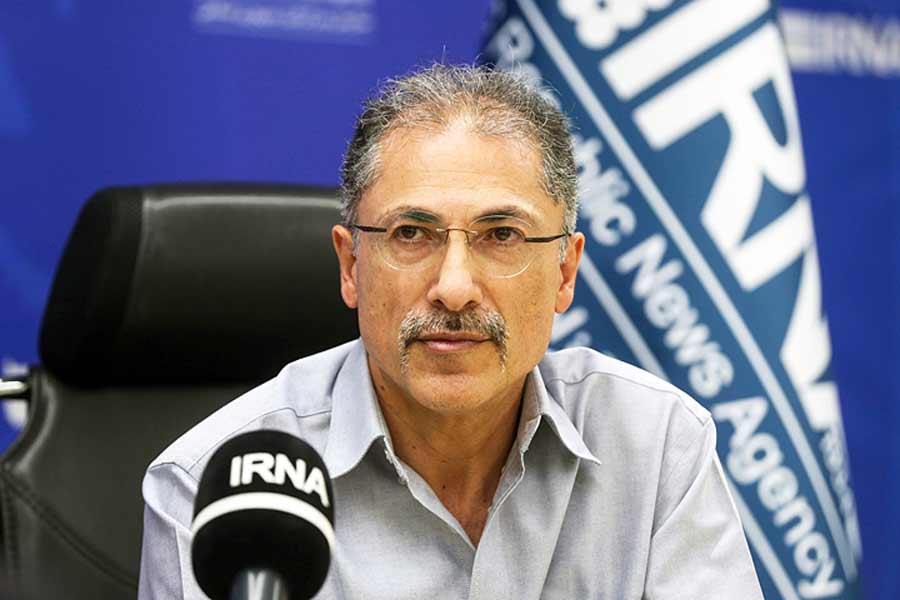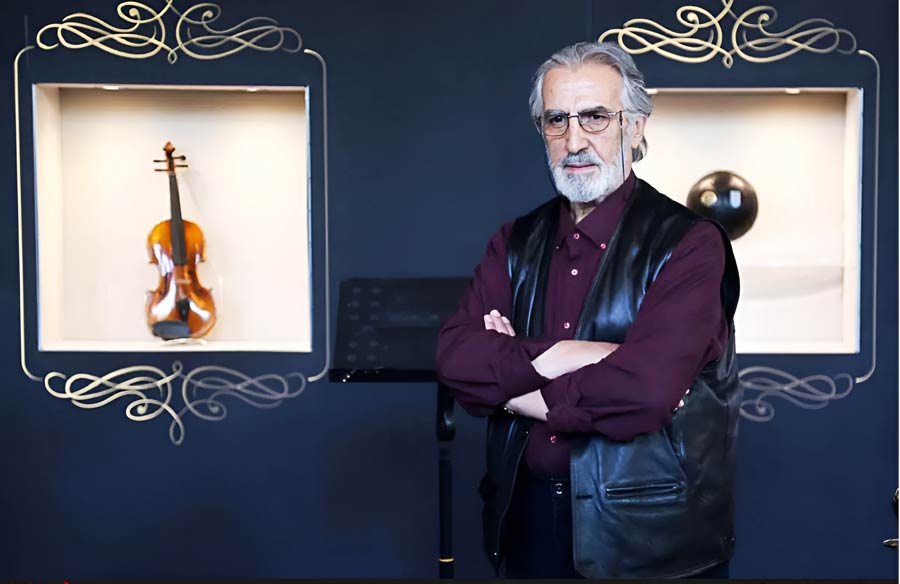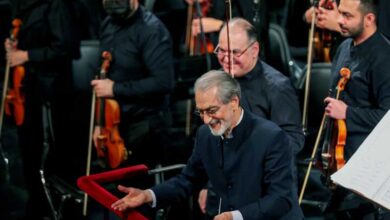Banan, is criterion of Iranian singing
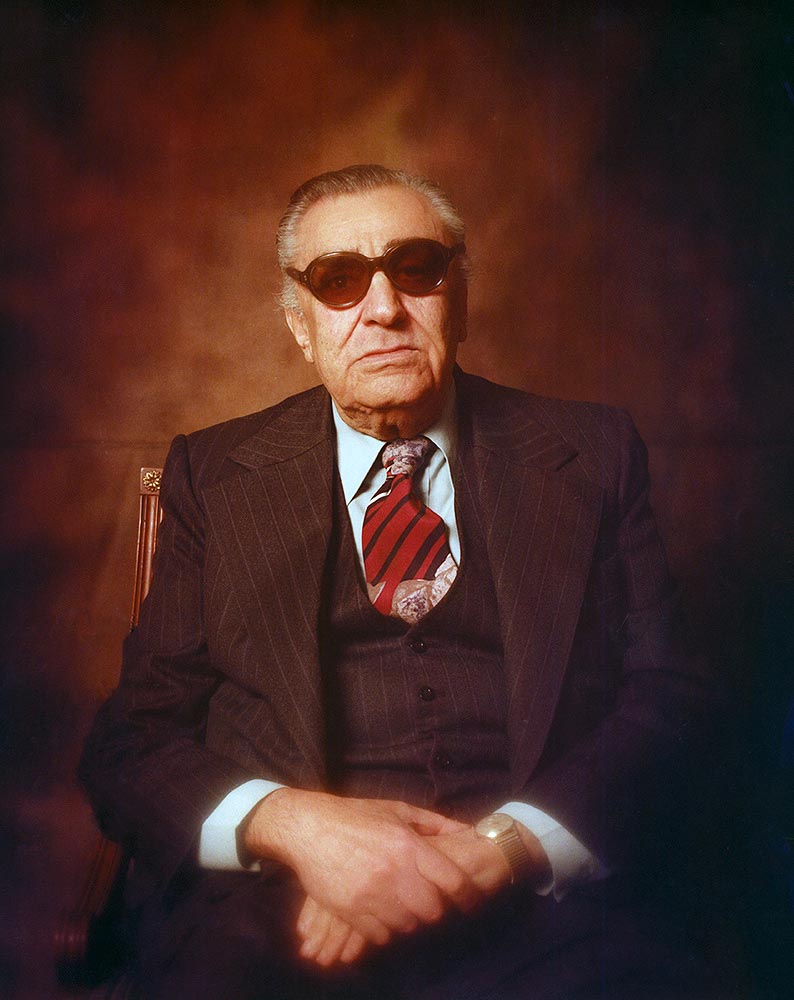
Gholam Hossein Banan’s position in the art world is such that it is not unreasonable to describe him as an irreplaceable figure in history of Iranian music; a name reminiscent of timeless sounds and pieces.
According to Artmag, quoted by the Etemad newspaper, Banan was a popular figure both among music experts and among the people, and had many fans and audiences. He was one of the first singers to become acquainted with and master the musical note. He has been given many titles and various descriptions of his art, but the description of Mir Ali, Reza Mir Ali Naghi is perhaps one of the most comprehensive descriptions; He considers Banan as “criterion of Iranian singing”.
The constructive features of Banan’s artistic importance are numerous and their description does not fit in this space, and his exemplary skill in correct recitation and perfect speech is just one of them. He was born on May 1, 1911 and died on March 29, 1985 in his hometown of Tehran.
On the eve of the birthday of the late Banan, Mir Alireza Mir Ali Neghi, a researcher and historian of contemporary Iranian music, talks about the importance, influence and position of Gholam Hossein Banan in Iranian vocal music.
First of all, to begin with, talk about the importance and, of course, Mr. Banan’s influence on Iranian vocal music.
The importance of Mr. Banan in vocal music is that he is the only singer who is the bridge between the old tradition and the new approaches to singing in the modern era; That is, he is both the heir of a tradition that is associated with people such as Seyyed Hossein Taherzadeh and Sheikh Taher Zia-ul-Dhakerin, and the heir of the modern era of singing, which is related to Ali Naqi Vaziri and his students such as Ruhollah Khaleqi and Master Musa Maroufi in a completely different style. Taking advantage of this difference, he has created brilliant works and no other singer has been as successful as him. In fact, if we examine the history of Iranian song in terms of the variety of styles and influences on the people through the media, we must divide it into before and after Banan.
Continuing the previous question, he was one of the first singers who was familiar with the note or the international line of music. How important was this issue at that time?
Yes; But before her, they were Ms. Rouhangiz. Ms. Batool Abbasi, nicknamed Rouhangiz, who was the exclusive singer of Colonel Ali Naqi Khan Vaziri High School of Music and according to the Colonel’s teachings, at the same time, they became acquainted with reading and writing the usual Persian language, as well as learning the music of the note. Since then, the gramophone record of Mr. Hossein Sanjari has been available. At that time, familiarity with the net was a very important issue that not every reader had access to. Ms. Rouhangiz, the living memory of Abdul Ali Vaziri, and Mr. Banan were three people who were familiar with the music of the note at that time.
An interesting point about Banan’s fame is that he is popular both among music experts and among the general public; I mean, his fans are not just musicologists or just the general public. What characteristics do you think this diversity of audiences refers to in him?
Yes; Mr. Banan had a large following both in the educated class and among the people; But not the common people; Because Mr. Banan has not been and is not a public singer in any way, and it is better to use the title of non-specialists or middle classes of music instead of the term “common people”. He had a very high position among the chosen ones and music experts both with his heavy songs and the Fower Program, as well as with the beautiful songs he sang such as Cute Goddess, What Do You Want, Falbin Girl, Bakht Bidar and many other songs that were collaborated with three The very good composer of that time, Akbar Mohseni, Mehdi Meftah and Nasrollah Zarrin Panjeh, was made and was popular among the educated people and the middle class. This was because he was absolutely capable; Able to perform every factor that is somehow related to the ways of expression in music, from good sonority to extraordinary musical hearing, very strong intelligence and percussion, poetry, use instead of writing tools and culture and culture and his very strong social personality, which is very It was effective. This was the breadth of his audience in those years of his activity. But in the years after his death, it became much more, that is, as if an energy was released from Mr. Banan, which greatly contributed to his fame, and for those who have seen those periods and see that Mr. Banan’s fame has increased after his death, can Be very interesting.
Let’s hear the characteristics of Mr. Banan’s vocal style from you and why his work is unique and why the singers can not reach this point now?
In the songs he sings, if he followed the tradition, his work was a combination of Seyyed Hossein Taherzadeh and Adib Khansari, whom Mr. Banan had an excessive love for both of them, especially the late Adib, and if in its revised form, exactly the melodic line of masters like Vaziri, Khaleghi, Saba ,and Musa Marufi and it can not be said that it was his style, but in the parts related to the singing technique, for example in the writings, part of it is like learning the rhetorical methods in music such as news expression, questioning, interrogation and so on. .. has been acquired, but there is no doubt in Mr. Banan’s innate talent, and we see that he has sung many songs in the most beautiful way possible. Now, why the present singers can not reach this point, one is because the purpose of the present singers in music and especially singing with the purpose of the past singers whose index was the late Master Banan is completely different and even opposite, ie in There are two completely opposite paths and secondly, the questions of these modern friends about their art, song and desires, and especially their aesthetics, both in music and poetry, have nothing to do with the aesthetic desires of Banan and his contemporaries. If the intention is different, naturally the way will be different.
Now that we are talking about analogy, although analogy is different, which of the contemporary readers can be seen as equal to Banan?
If by analogy I do not agree with the analogy, in fact none; Neither the living contemporary singers nor the ones who have died are on a par with Banan, meaning that we really did not have Banan like him before or after, he is completely unique.
Some consider Banan to be the most powerful and greatest performer of the Vaziri-Khaleghi style; What is basically a feature of this style? Is such a ministerial-creative style title true about him at all?
The title of Vaziri-Khaleghi style is correct for Mr. Banan’s singing style, but it is not enough because Mr. Banan was fluent in both this style and the traditional style, and based on his unique innate talent, he always wanted to enter either of these two spaces. Been. Characteristic of what we call the Vaziri-Khaleghi style of music is the music of the modern age, which can be framed by several characteristics: It means consciously distancing oneself and not blindly following the line patterns and creating new melodies based on the character of Iranian melodies, without doing unfamiliar and unpleasant things. Another feature of this school is that it transformed music from a state of pure improvisation to draft and orchestral music, so that in the orchestra, each instrument had its own role and a change in approach to poetry was also discussed.
In some writings, Banan is considered to be influenced by masters such as Seyyed Hossein Taherzadeh, Qamar al-Muluk Vaziri and Adib Khansari. What do you think about this?
It is not true to say that Banan is influenced by great masters, including Qamar al-Muluk Vaziri; First, Qamar was not a master at all, and we have no master at all in female singers. We have good singers and even great singers like Qamar, but no female singer in our music history has reached the stage of mastery and influence in terms of style and creativity, and it is inappropriate to mention this title here. I think that Banan was influenced by Taherzadeh to a lesser extent and Adib to a much greater extent, that is, the dominant aspect, and he himself said this and acknowledged this. Basically, Adib Khansari had a great love for the style and style of singing, but he was not a mere imitator at all, and he always had his own initiatives and influence, while mixing the influences he had received from different singers. Of course, this is more possible by listening to examples than by these generalities.
Tell us about Banan’s collaborations with other artists; Many of his magnificent works were made with Morteza Mahjoubi, right? Apart from Mr. Mahjoubi, what other people were more in tune with Banan’s musical atmosphere?
Yes. That’s right; A large number of his magnificent works with Morteza Mahjoubi were first composed because of a strong element such as Master Ruhollah Khaleghi secondly, the existence of the Golha program and the management of the late Davood Pirnia were very effective in making Banan harmonize with Mahjoubi, and in addition, he was a cultural-class character who was present both in Mahjoubi and in singing. Mr. Banan and that have been their aristocratic state. Of course, aristocracy here is not of a financial or economic nature, but a cultural one. Banan and Mahjoubi’s cultural approach was very similar, but in my opinion, Banan’s best accompanist even before Ustad Mahjoubi is the late Ustad Lotfollah Majd, meaning that Banan’s song is very similar to Tar Majd and then to Abolhassan Saba’s violin. I know that they themselves were Saba’s violin students for many years.
But a singer with these vocal characteristics and with these unique characteristics withdrew from the music scene in the forties and almost two decades before his death. Why did this happen?
Mr. Banan’s withdrawal from the music scene, singing and working in the mass media had two reasons; One was the disruption of the Golha (Flowers) program after the dismissal of the late Davood Pirnia and the death of the first-rate musicians who worked with him, such as Master Morteza Mahjoubi, Master Ruhollah Khaleghi, and Master Musa Marufi, and then the vulgarity that Banan suffered from for this reason. Banan retired in 1966 at the height of his ability.
I read in one of your notes that “Mr. Banan did not have the patience to teach a teacher.” Of course, it is often said that a good singer is not necessarily a teacher, and of course the opposite is also true. Was there a desire to train students at all?
In him, there was no desire to train a student, meaning a school and a teacher only to work with students from scratch. He was never a mere teacher, but he wanted the student to learn the correct principles and basics of singing from another teacher and then work with him on the subtleties, minutes and beauties of art, because the principle of art and song is there. In any case, he was a great orchestral singer and a very capable chamber singer who had dedicated his life to excellent performances and recordings, and teaching was basically a side issue for him, unlike some other professors for whom teaching was the first and last life, Mr. Banan Was not. He did not want to train students, but at the same time he did not touch any talented and enthusiastic person. Everyone was able to benefit from him, including the late Ahmad Ebrahimi and the late Kaveh Deilami, who were his direct students, and the late Mahmoudi Khansari, who was his indirect student. Of course, there were other people who were indirectly influenced by Mr. Banan the Great.
Although Mr. Banan’s works each have their own characteristics, what do you think are his outstanding works? For example, some of their works such as “Iran”, “Happy Spring”, “Deilman” or “Caravan” or “Elaheh Naz (Cute Goddess)” are better known among the people.
His outstanding works can be divided into three periods: The first period is a period published by the Mahour Cultural and Artistic Institute and is a very valuable work called “Master Banan’s works on the gramophone records.” These works are related to the year 1941 and show their artistic characteristics and sound abilities. This period, which is a plate of stone, was rare until recently, but is now available. The second period of his work, which is a very important period, is the period of the radio and the Golha program, which started in 1955 and continues until 1965-1966. During this period, about 300 of his programs were recorded on the radio, and most of them included songs and heavy compositions, compositions that were far from popular understanding and were mostly loved by music experts and lovers of the promotion of Iranian music, from which I can give an example. For example, I miss you, with the composition of Master Ali Naqi Vaziri, you came here but why now? (Amadi Janam Be Ghorbanat Vali Hala Chera?), but now why with the composition of Master Ruhollah Khaleghi, Morgh-e Haq with the composition of Master Musa Khan Maroufi and the composition of Master Khaleghi, Didi Ey Mahو with the composition of Master Hossein Yahaghi and the composition of Master Khaleqi and Most importantly, the caravan made by Master Morteza Khan Mahjubi, arranged by Master Khaleghi and Master Javad Maroufi. The third period of his works, after a car accident and blindness is one of their eyes that caused spiritual changes in him. During this period, which begins in 1958, in addition to recording the heavy Golha Program, they began to sing songs with which they wanted to get closer to the general taste and the expanding middle class. I would like to point out that this class was from the cultural middle class, not from the lower class and the common people. , Are heavy and glorious works, especially those works that were in a format with the cooperation of three masters of the same age, friend, acquaintance, companions and comrades of Mr. Banan, which I say without order, and I have already said Akbar Mohseni, Nasrullah Zarrinpanjeh and Mehdi Meftah. Of course, they have used the works of others in their performances, but these three are more prominent, and fortunately all of them were published by the late Ms. Paridokht Banan, the wife of Master Banan and the Mahour Cultural and Artistic Institute, and will be available to the public after years and decades. has taken. If we consider the fourth period for his works, it includes private and home recordings that have been released in the form of 9 CDs by the dear artist, with taste and devoted element of music, Mr. Ali Rostamian, at the Chaharbagh Cultural and Artistic Institute, which are available to everyone.
However, your works about Mr. Banan have had a lot of research and studies, and of course the scope of your knowledge and awareness is beyond our limited space. However, in the final part, regardless of what has been asked, I would like to say something about this late artist.
Banan, is criterion of Iranian singing. Of course, Iranian song has two great architects. One is Seyed Hossein Taherzadeh and the other is Akbar Golpayegani. But the criteria are a few people who are next to these two great masters who are 60-50 years apart in age. The greatest of them are: Adib, Taj, Zoli, Ghavami, Banan and Shahidi, whose life is one of the great artists whose performances can be learned as a measure of art, especially in dealing with poetry and how to use writings, silences. And the special aesthetics that accompany melody in poetry. The most important thing I can say right now is that beginners and young people who come to learn Iranian music in the vocal department, should never use the dominant discourse of a period that has been in the last 40-30 years as an absolute criterion. Consider the title of one of the characteristics along with other characteristics and pay special attention to the vocal style of Master Banan as an excellent criterion for teaching.


